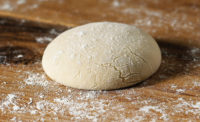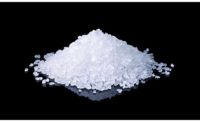There are no secret ingredients or master recipes in great bread baking. Successful artisan bread baking is largely focused on controlling fermentation. Controlled fermentation accounts for greater dough strength, longer product shelf life due to acidification and, more importantly for your customer, complex flavor.
Much like the health of the human body, dough fermentation depends on adequate nutrition, proper temperature, appropriate salinity, prodigious hydration, enzymatic activity and attentive care. In short, dough fermentation occurs when alpha-amylase converts carbohydrates into simple sugars, which are converted by yeast into life energy for the yeast, carbon dioxide, alcohol and organic acids.
Many bakers are not familiar with the conversion of starch to sugar by a collection of enzymes, including beta-amylase, maltase and alpha-amylase, the last of which is one of the connections between human and dough biology. Our salivary glands also create alpha-amylase to break starch into maltose and dextrin.
The milling industry tests for enzyme activity by using the falling number test. Enzyme activity in flour varies depending on the health of the grain and whether the season was conducive to wheat berry germination before harvest and milling. An ideal falling number is 250–300 seconds for white flour, and the higher the falling number, the lower the rate of fermentation.
Once the starch/sugar conversion is complete, the yeast can get to work and create the products that make bread so satisfying to make and eat. Of course, the yeast is not doing this for the satisfaction of humans. Its foremost job is to produce life energy, so it can continue to reproduce asexually and propagate itself. Heat is also released, just as in the human body. This is why a tub of preferment or dough is usually slightly warmer than its surrounding environment.
Everything that eats gives off gas. People and animals exhale carbon dioxide. Trees photosynthesize carbon dioxide and release oxygen. Yeast also gives off carbon dioxide. This gas is trapped within the gluten matrix, swells the entire dough mass and is directly responsible for making bread rise. The importance of controlled fermentation is apparent when it comes to the volume of dough and the baked loaf.
In bread dough fermentation, alcohol is a flavoring and aromatic agent. Most of it is evaporated during the baking process, but it does lend complexity to the flavor and overall character of the bread. Overfermented preferments and dough take on a boozy smell.
Organic acids, mainly lactic and acetic acid, create complex flavor, increase dough strength and lengthen shelf life. The flavor profiles created by one or both of these acids are largely what draw customers. The flavor of these two acids is very different. Lactic acid imparts the natural flavor of grain and a subtle and wholesome buttery essence. Acetic acid is sharper and more sour. A combination of these two acids can be accomplished by manipulating and combining variables such as time, temperature and hydration.
I would be remiss to end a discussion of fermentation without mentioning the differences between wild and commercial yeast. For most of the 6,000 years humans have been baking leavened bread, wild yeast levains, or sourdough starters, have provided the leavening power. This advancement in food processing is attributed to the ancient Egyptians, who observed that grain and water mixtures, if allowed to sit, change in regard to digestibility, lightness and flavor. The wild yeast that was—and still is—responsible for this transformative process occurs naturally and differs throughout the world.
“Domestic yeast,” available in fresh and dry forms, was discovered and cultured by Louis Pasteur in the 1850s. His discovery had a massive impact on the baking industry by increasing the fermentation speed, which reduced the required labor. The processes of controlling fermentation with both these yeasts are similar, but there are key differences that aid a production schedule and the characteristics of the final loaf.
The control of the variables mentioned in this column will be examined in the next Artisan column in the September issue.






